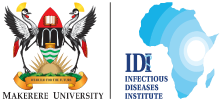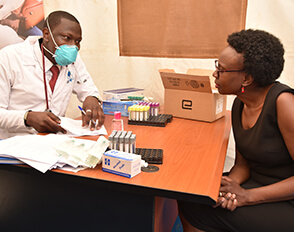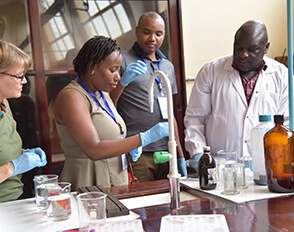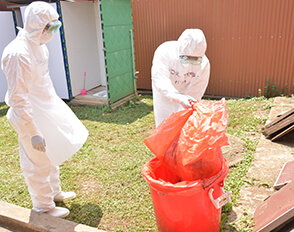Dr. Lisa also noted that the burden of HIV is still high and urged actors to scale up well proven prevention interventions in order to close the tap on new HIV infections. “More men must be diagnosed and initiated on treatment” she said.
In attendance was the Chief Guest and Minister for Defense Gen. Kahinda Otafiire who represented his excellency the president of Uganda, Yoweri Kaguta Museveni, the UNAIDS Country Director, Dr. Karusa Kiragu and the Ministry of health Commissioner for communicable Diseases. There was also a delegation of over 12 members of Parliament constituting the HIV committee led by the Chair, Judith Alyek , district political and technical heads from the 15 districts in the Bunyoro and Toro regions, religious leaders, key implementing partners and officials from the Uganda Aids Commission among others.
Earlier in the day, Dr. Lisa in company of IDI program officers visited the HIV clinic at Hoima regional referral Hospital which currently has over 6000 clients in care including children, and adolescents. She noted the importance of this critical site for carrying out HIV testing services as better yields could be registered.
The Midwestern region covers 15 districts of: Hoima, Buliisa, Kiryandongo, Masindi, Kakumiro, Kagadi, Kibaale, Kyegegwa, Kyenjojo, Ntoroko, Bundibugyo, Kasese, Kabarole, Kamwenge and Bunyangabu.
The specific objectives of the PFTI include: 1. To engage men in HIV Prevention and close the tap on new infections particularly among adolescent girls and young women; 2. To accelerate Implementation of Test and Treat and attainment of the fast track 90-90-90 targets particularly among men and young people; 3. To consolidate progress on elimination of mother-to-child-transmission of HIV; 4. To ensure financial sustainability for the HIV and AIDS response; 5. To ensure institutional effectiveness for a well-coordinated multi-sectoral response.






